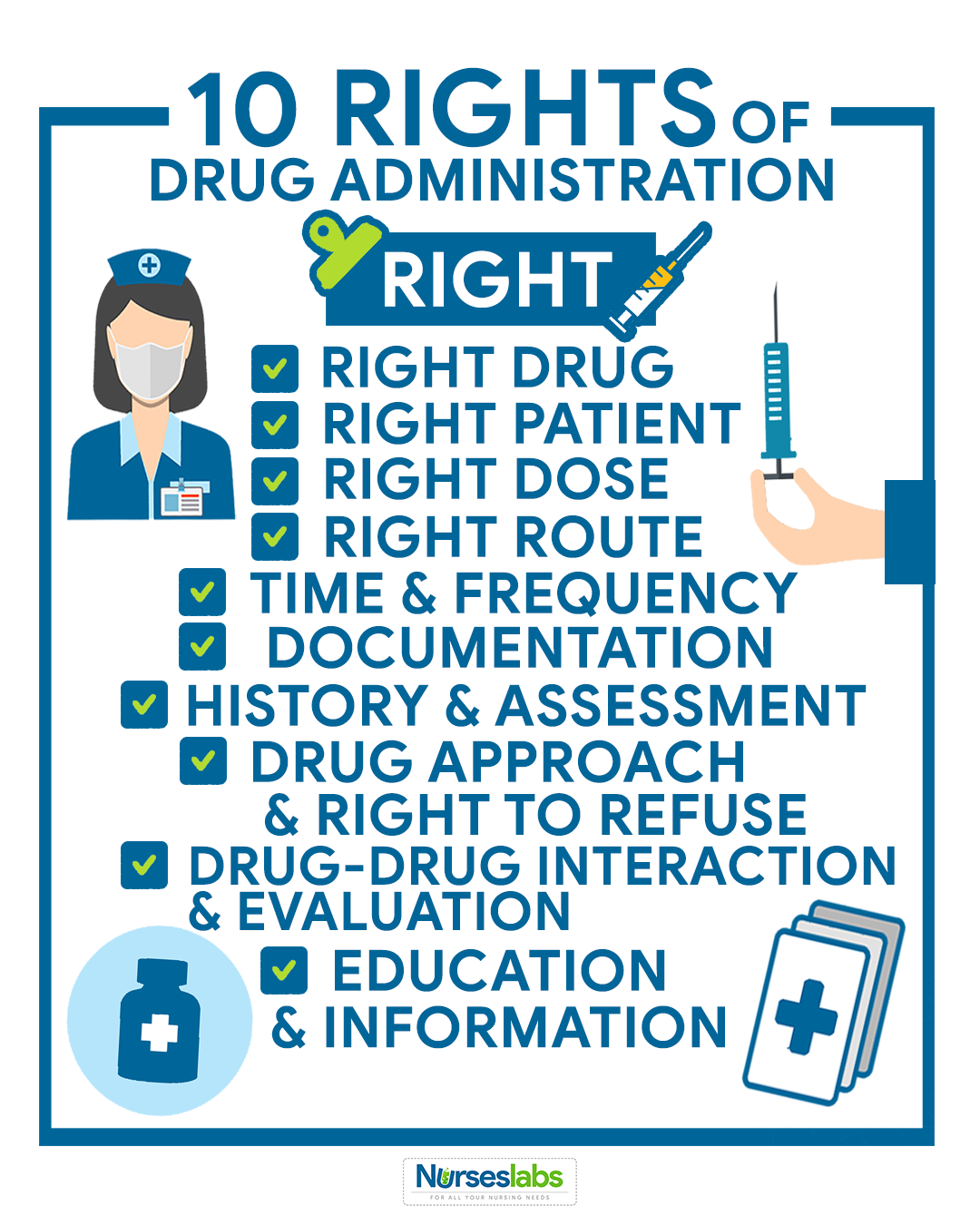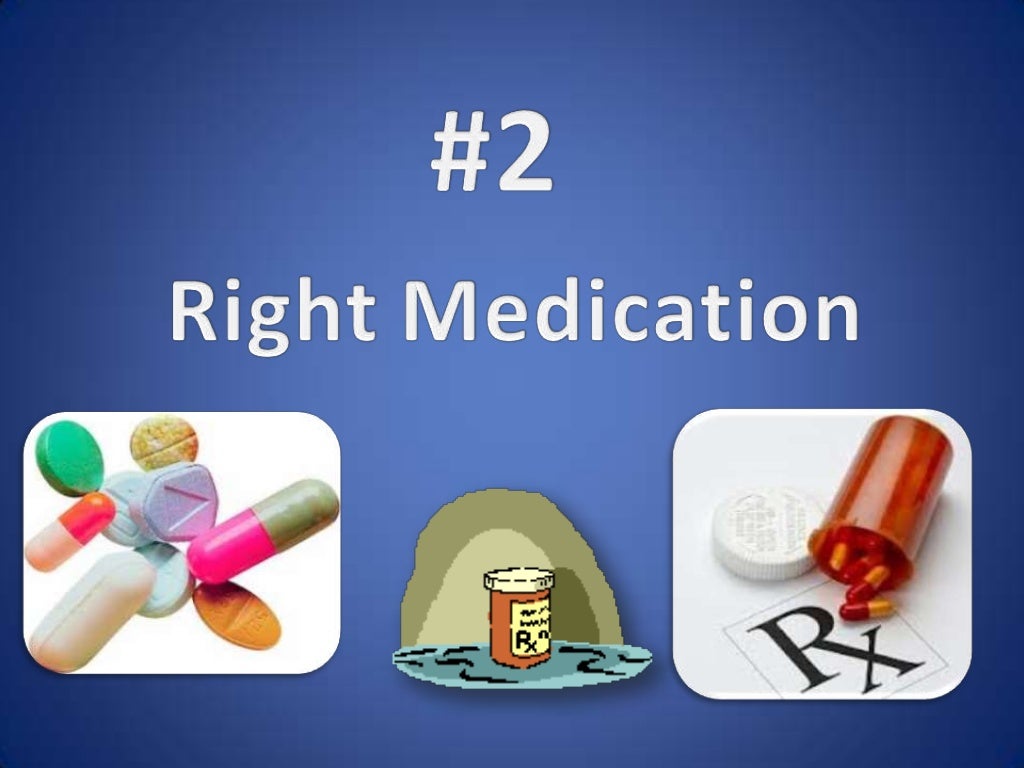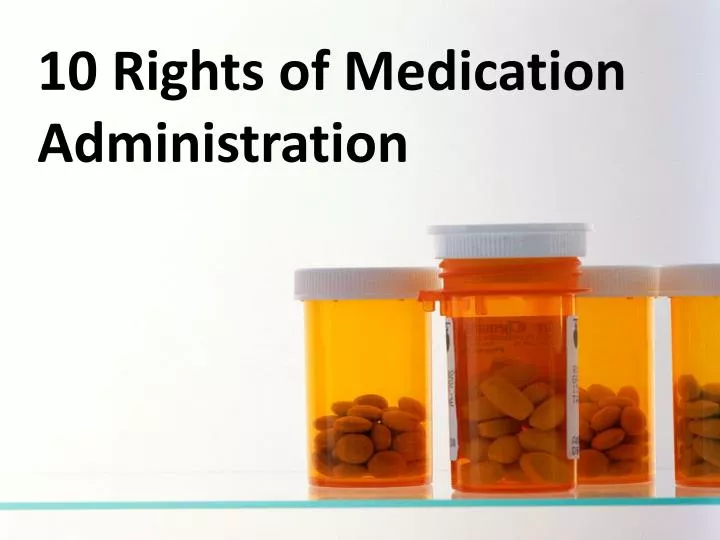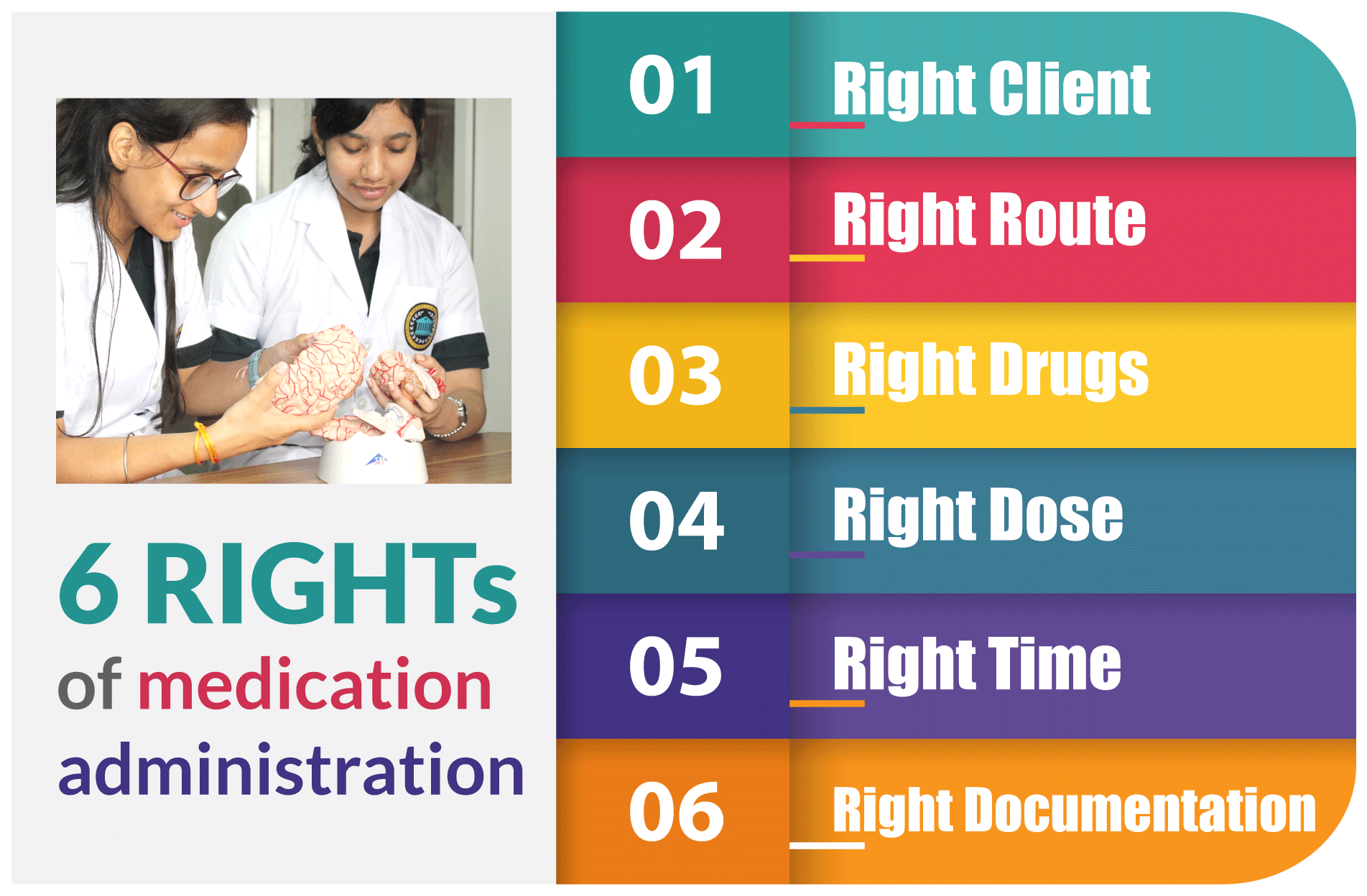
10 Rights Of Medication Administration cloudshareinfo
Administration of medication requires thorough understanding the drug, including:. The "rights" are a starting point in helping to make sure that medications are given correctly and safely.

10 Rights of Medication Administration
Nurses have a unique role and responsibility in medication administration, in that they are frequently the final person to check to see that the medication is correctly prescribed and dispensed before administration. It is standard during nursing education to receive instruction on a guide to clinic.

The 10 Rights of Drug Administration Nurseslabs
Safe medication administration is said to require much more than the five rights and medication management to avoid costly errors. Literature is gradually showing more evidence that new efforts to maintain safety should also highlight the emergence of nurses' clinical reasoning as the element that shapes nurses to become highly competent in.

10 Rights of medication administration for nurses and family caregivers to keep in
Let's take a look at the 5, 6, 8, 10 Rights of Medication Administration. The Right Patient. During a busy shift, a nurse administers medication to numerous patients. Medication administration happens at varying times throughout the day. Medication errors occur when a medication is given to one patient when it was intended for another.

10 rights of medication administration
The "10 Rights of Drug Administration" provides an organized framework to reduce the danger of errors and improve the well-being of your loved ones. Ensuring medication safety is a crucial component of caregiving. As caregivers, we have a significant impact on how individuals we look after receive treatment.

The 10 Rights of Drug Administration Nurseslabs
The first right of drug administration is to check and verify if it's the right name and form. Beware of look-alike and sound-alike medication names. Misreading medication names that look similar is a common mistake. These look-alike medication names may also sound alike and can lead to errors associated with verbal prescriptions.

10 rights of medication administration
Medication administration is a critical aspect of healthcare that requires meticulous attention to detail and a thorough understanding of safety protocols. To ensure patient well-being and prevent medication errors, healthcare professionals follow a set of guiding principles known as the "10 Rights of Medication Administration."

The 8 Rights of Medication Administration HCPA
THE 10 RIGHTS OF MEDICATION ADMINISTRATION: Here are the 10 "rights" of giving medications. You may see a subset of this list (like the 5 rights, 6 rights, 8 rights, etc.). This is the comprehensive list that should include all of those. Right patient Use at least 2 unique patient identifiers before you give any medication to a patient.

ll 10 Rights Of Medication Administration ll NursesvoiceD YouTube
The first of the 10 medication administration rights is having the right patient. You need to start by knowing what medication is for what patient. Ask the patient to verify their name and date of birth and match it with their medical record. Then go ahead and scan the patients arm band into the system to verify it.

10 Rights of Medication Administration Pharmacology nursing, Nursing mnemonics, Medication
SOURCES: Care Hope College: "7 Rights Of Medication Administration." Department of Developmental Services: "7 Rights of Assisting with Self-Administration of Medication."

PPT 10 Rights of Medication Administration PowerPoint Presentation, free download ID1451582
There is a large and growing body of research addressing medication safety in health care. This literature covers the extent of the problem of medication errors and adverse drug events, the phases of the medication-use process vulnerable to error, and the threats all of this poses for patients. As this body of literature is evaluated, the fact that there are crucial areas about which we know.

10 Rights of Drug Administration Nursing Path
Rights of Medication Administration review for nursing students! The purpose of the Rights of Medication Administration is to prevent medication errors. The nurse is the last safety net in medication administration, and we must always double or even triple check everything. As a nurse, I've caught many medication errors by using the Rights of Medication Administration.

10 Rights in Medication Administration
Correct medication administration requires close attention to detail. The basic five "rights" of medication administration help reduce errors. The rights are: right patient, right drug, right time, right dose, and right route. Understanding medication routes of administration and common errors in medication use can help improve medication.

10 Rights of Medication Administration
This includes documenting the medication name, dose, route, time of administration, and any adverse reactions or side effects. Pass Your Nursing School Classes with Less Stress. Medication administration is a fundamental nursing responsibility, and you must understand the principles and best practices of medication administration as a nursing.

Rights of Medication Administration in Nursing (5, 6, 7, 9, 10, 12) NCLEX Review YouTube
10. Right evaluation. Ensure the medication is working the way it should. Ensure medications are reviewed regularly. Ongoing observations if required. Points 1 to 5 are the '5 Rights of Medication Administration. Points 6-10 are unratified checks that have been suggested by multiple US nursing boards and research panels to enhance patient safety.

10 Rights Of Medication Administration / (PDF) The nine rights of medication administration An
Medical practices have changed to include a few more rights. 10 Rights of Medication Administration 1. Right Patient. Make sure you are giving the right medication to the right person.If you are at home and giving medication to a family member, make sure you check the bottle and giving the right prescription to the right person.